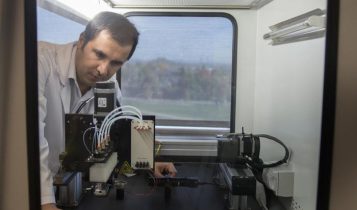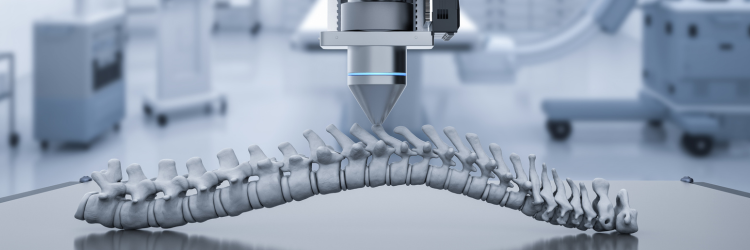3D Printing for Human Health
More than 100,000 people are waiting for organ transplants at this moment. While every donation has the possibility of saving multiple lives, there aren’t enough viable organs to whittle down the waiting list. Enter Penn State. Researchers are developing technology to enable the rapid 3D printing of human tissue and organs.
With over $2 million from The National Institute of Health, the team, led by Ibrahim T. Ozbolat, wants to create a technology platform for native tissues like bones, tracheas, and organs.
“It could be used for implantation, inserting tissue directly into the body, or it can bioprint model organs for research like drug development and disease modeling. The ultimate use is for healthcare applications, but it can cover a broad range of functions,” says Ozbolat.
Ozbolat’s lab already has experience in bioprinting and has developed a process for cellular aggregates or cell clusters. They plan to upscale this tech to print the clusters into desired patterns for the fabrication of tissues with cell densities similar to those found in nature.

“This technology, once fully developed, can be applied for the fabrication of a variety of human tissues,” said co-principal investigator Elias Rizk, a professor of neurosurgery at Penn State College of Medicine. “It could be cardiac tissue or lung tissue. It could be skin or even bone, which is tissue. This technology could repair bone in a rapid manner, even in sensitive places like the skull.”
The team calls the technology “high-throughput spheroid (HTS) bioprinting.” The tech will be able to bioprint multiple spheroids in varying sizes at once with high accuracy in all three dimensions. It will be fast, versatile, and able to print complex structures onto the surface of gel substrates for research purposes or in a scaffold-free manner for the scalable fabrication of tissues.
“We are already printing these tissue ‘bricks’ with the highest throughput in the literature,” Ozbolat said. “That’s the most significant and unique part of this technology. It’s truly amazing. If we can do it quickly, at scale, then it could fundamentally change the field of medicine.”

